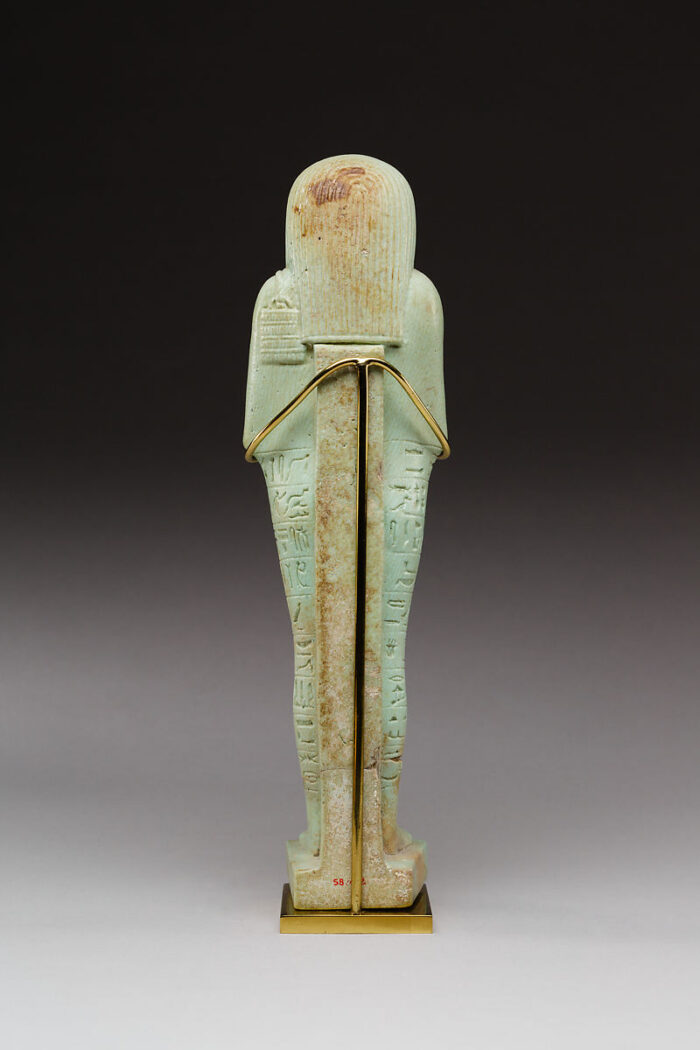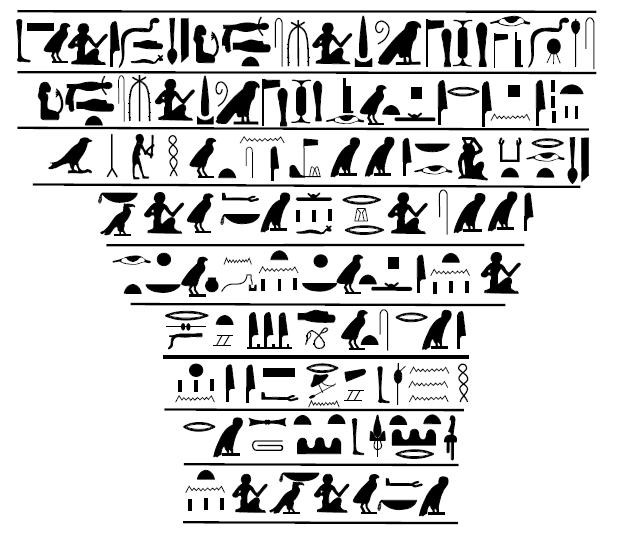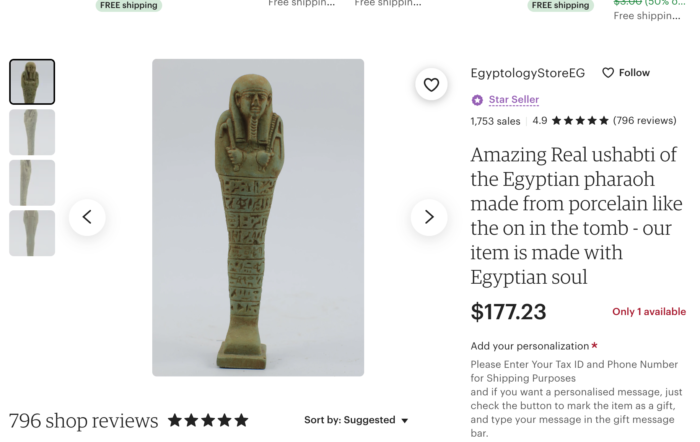Like many others, I was fascinated when I first saw the King Tut Exhibition at the Metropolitan Museum of Art in New York City at twelve years old. I was captivated by the intricate wrappings of a figure who was alive so long ago and the elaborate nature of the coffin he was placed in that was covered in gold and other precious materials. It’s easy to be distracted by the gold coffin of King Tut, but there are objects that are significantly smaller in size but just as important, if not more important, than the coffin itself that I somehow missed. These objects are called ushabtis and they were thought to be incredibly important to have in the afterlife of a deceased Egyptian. How could I miss these objects? And is it unjust to put these in museums?
Appearance
Ushabtis look like mummified human figures that represent the body in the traditional Egyptian fashion of crossing the arms over the chest. They were usually made with a material called faience because it was relatively inexpensive. Faience was most commonly a bluish green color but also could be other colors as well. This material was used to make a lot of objects, but most often used for making ushabtis.



Purpose
Ushabtis went into tombs along with other grave goods and they were designed to act as servants in the afterlife for the deceased. The Egyptians believed that the afterlife was merely an extension of life on earth, so that meant doing agricultural labor in the afterlife. The Ushabti can be seen holding a bag of seeds as well as a hoe and a pick. King Tut had 413 Ushabtis in his tomb!

Spells
The figures were inscribed with a text from the Book of the Dead Chapter 6, the ‘shabti spell’ which defined the responsibilities of the Ushabti for the deceased. For example, the spell inscribed on a priest of the goddess Neith named Horudja who was alive in the 30th Dynasty is translated as: The illuminated one, the Osiris, the Priest of Neith, Horudja, born to Shedet, justified, he says: O these ushabtis, if counted upon, the Osiris, the Priest of Neith, Horudja, born to Shedet, justified, to do all the works that are to be done there in the realm of the dead – now indeed obstacles are implanted there – as a man at his duties, “here I am!” you shall say when you are counted upon at any time to serve there, to cultivate the fields, to irrigate the river banks, to ferry the sand of the west to the east and vice–versa, “here I am” you shall say. It looks like this:

Final Destination
But remember, you could only use your ushabti in the field of reeds and live in a heavenly paradise for all of eternity if your heart weighed less than a feather, meaning that you followed the moral and ethical principles of ancient Egyptian society.

You Definitely Needed at Least One Ushabti in Your Grave
From the 21st Dynasty onwards, ushabti were were common in graves, and even in large numbers! The floor of the graves were sometimes completely covered with ushabti figures. Pharaohs had even more than the regular person and in particular, king Taharqa had more than a thousand in his tomb! Imagine not having ushabtis buried with you when you died in ancient Egypt- it must have been back breaking work! And even worse, to see the other deceased Egyptians’ ushabti doing their work for them! Ushabtis were incredibly important to have in your grave because you would use them for all of eternity. So even in 2022.
Just or Unjust?
Do our hearts weigh less than a feather? Probably not. If the ushabti were intended to do the work for the dead and only be used for the person who was buried with it, why are we digging up these people’s final resting places and disturbing the places that were never meant to be touched again so we can put items in museums? Even worse, we’re selling their ushabtis on etsy, ebay, and amazon! The Egyptians would certainly not approve of this, so why are we looting objects that were important to them and still are important to them in order to live a peaceful afterlife? We, westerners, should not be interfering with the Egyptians entire belief system of the afterlife and using objects for our own benefit.
Erin Meador is a Senior from Westchester, New York. She is majoring in International Relations and minoring in French. She is a French tutor and is loyalty chairperson of Gamma Phi Beta st Colgate. She plans to work in architecture after graduation.



